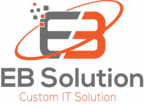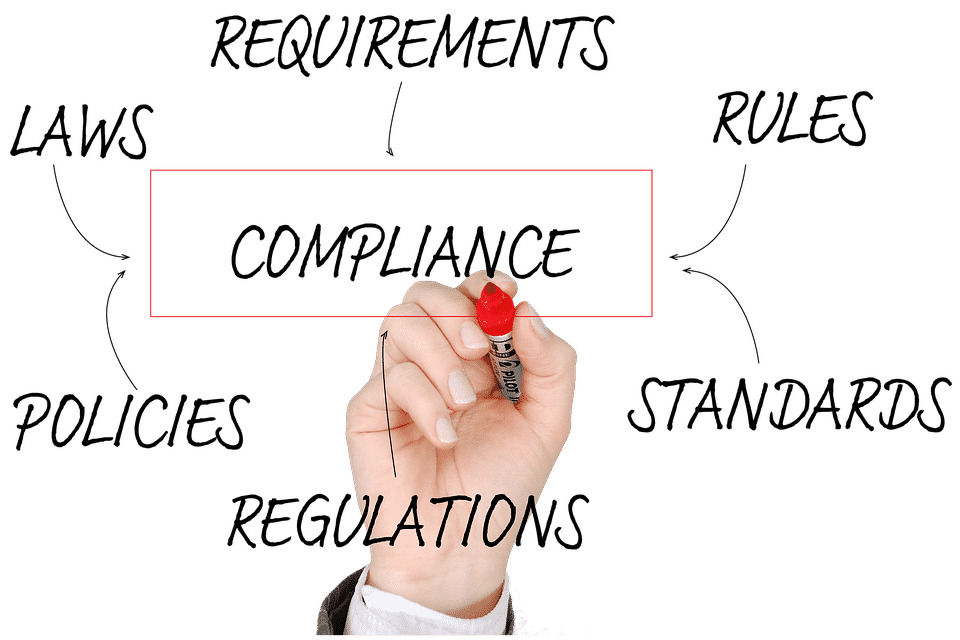Setting up a robust IT compliance policy in your business is more important now than ever.
How EB Solution creating, managing and evaluating IT compliance policy for small and medium business in Canada and USA.
Online companies rely on e-commerce websites to do business by taking orders and receiving payments. Even brick-and-mortar organizations utilize software to perform various activities, such as order management and back-office accounting.
Conducting business operations in the digital world is prone to security risks. In a world where everyone is trying to keep up with technology, a business without the proper security measures put themselves in a very dangerous situation.
The only way to avoid your IT systems getting abused, sensitive data being stolen and company’s operations grinded to a halt is to create a strong IT compliance policy.
This article will cover key considerations when developing your system of IT compliance.
WHAT YOU NEED TO CONSIDER FOR IT COMPLIANCE POLICIES
FACTOR #1 – PEOPLE, PROCESSES, AND HOW THEY ALIGN TO TECH
IT compliance isn’t just about technology – it also involves people and processes. And the reality is that many organizations focus heavily on their tech, resulting in failed audits due to their failure to consider the other two aspects.
A study of large-scale data breaches over the last three decades has revealed the most common cause of these incidents. It found that 88% of the security breaches were due to human error.
The most common type of human error is the corporate employees sending sensitive information via email without encryption, which can expose it to hackers.
Taking the correct approach can save you a lot of headaches and ensure that your enterprise adheres to the required standards.
FACTOR #2 – RELEVANT LAWS AND REGULATIONS
Laws and regulations often dictate the policies that govern IT compliance requirements. Here are the most common ones:
- The Sarbanes-Oxley Act – regulating financial reporting
- The Gramm-Leach-Bliley Act – governing non-public personal information and financial data
- The Health Insurance and Accountability ACT – regulating health information that healthcare organizations process
Ultimately, you can start your compliance process without understanding the laws and regulations applicable to your organization.
However, you should definitely look into “the controls” that apply to these laws and regulations. They are process-oriented and technical means to adhere to your policies.
There are various industry and government standards that specify them, including:
- Control Objectives for Information and Related IT
- National Institute of Standards and Technology
- Payment Card Industry Data
They have a lot of impact on your sector. Therefore, make sure to familiarize yourself with all the relevant ones.
FACTOR #3 – RAISING EMPLOYEE AWARENESS OF THE IMPORTANCE OF THE POLICY
Having employees who aren’t aware of the risks is a major threat to your security. Improper software upload, sharing, download, and storing can jeopardize critical information.
The reality is, many employees opt for insecure data transfer methods like personal emails, consumer-grade collaboration apps, and instant messaging due to their convenience. And that’s what makes them an ideal target for cybercriminals.
To prevent your business from becoming a victim, your employees must learn and understand where and how various threats originate from, what do they look like, what to do to safeguard their means of communication and who to contact in case they have any suspicion.
When developing your training plan, make sure to include several key topics:
- How insecure file transfer methods expose your company to risks
- Avoiding phishing scams
- Precautions to exercise before using or downloading unsanctioned applications
- The conditions for using and creating strong passwords.
Making file sharing a top priority and investing in proper education demonstrates the significance of IT compliance. Your work can go a long way to helping others adopt the best practices in this field.
FACTOR #4 – HOW YOUR IT POLICY ALIGNS WITH THE COMPANY’S SECURITY POLICIES
Understanding the culture of your company can help bring IT compliance to the workplace. Bringing these two aspects together will make it easier for both parties to work on their collective goals. For example, your environment can revolve around either processes or ad-hoc ways of doing things.
Enterprises aligning with the former are best off issuing in-depth policies to ensure compliance.
Whereas, companies that match the latter require detective and preventive controls. They need to address specific risks associated with your policy. It helps various auditors understand why you’ve deployed a particular control or decided to face certain risks.
FACTOR #5 – UNDERSTANDING OF THE IT ENVIRONMENT
IT environments directly affect how your IT policy compliance design will look like. That said, there are two main kinds of environments:
- Homogeneous environment – Consist of standardized vendors, configurations, and models. They’re largely consistent with your IT deployment.
- Heterogeneous environment – Uses a wide range of security and compliance applications, versions, and technologies.
Generally, homogeneous environments have significantly lower compliance costs. Plus, fewer vendors and technology add-ons simplify the environment itself and thus require fewer policies. As a result, the price of security and compliance per system noticeably lower than heterogeneous solutions.
Regardless of your environment, your policy needs to appropriately tackle new technologies, including virtualization and cloud computing.
FACTOR #6 – ESTABLISHMENT OF ACCOUNTABILITY
IT policy compliance won’t do any good without proper accountability. It involves defining organizational responsibilities and roles, determine the assets individuals need to protect and establish who has the power to make crucial decisions.
As for your IT providers, they have two pivotal roles:
- Data/system owners – The owner is part of your management team. They are responsible for data usage and care as well as accountable for protecting and managing information.
- Data/system custodians – Custodial roles can entail several duties, such as system administration, security analysis, legal counseling, and internal auditing.
Accountability is essential for IT policy compliance. Without any accountability, there’s no way to ensure the implementation is going according to plan.
FACTOR #7 – AUTOMATION OF THE COMPLIANCE PROCESS
As your IT environment changes and grows, internal auditors won’t be able to monitor everything.
Many IT organizations have a difficult time monitoring their environment on a regular basis. More and more systems are being brought on board, and it becomes impossible for internal auditors to manually evaluate everything. Fortunately, there is a solution to this problem: automation. Automated tools can monitor your environment, report findings back to you and provide recommendations on how to remediate any found issues.
BREEZE THROUGH YOUR BUSINESS’S IT COMPLIANCE
Setting up well-designed IT compliance may be a long process, but it definitely makes a big difference in terms of business security. It keeps your business reputation intact, keeps your data safe and allows you to avoid penalties and fines.
However, you’ll need to pay special attention to several aspects. And one of the most significant ones is your IT provider.
Here at EB Solution, we believe that if your IT isn’t living up to its potential, you’re bound to face compliance issues. This can cause tremendous stress and halt your operations.
Luckily, there might be an easy way out of your predicament.
Schedule an online meeting to discuss your IT problems and find out how to get more out of your provider.


